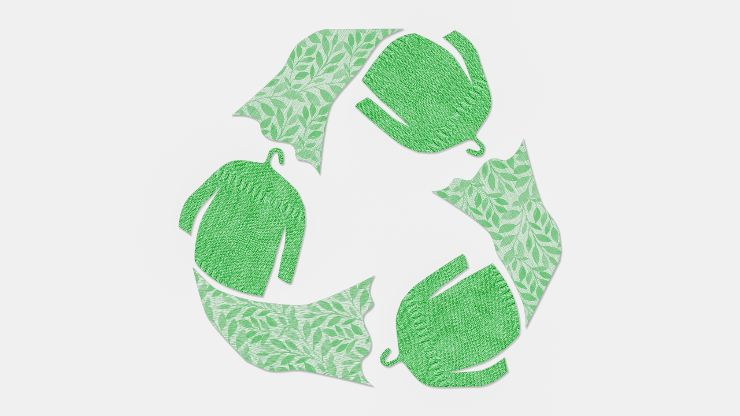By Maria Angella Fortich Fraija
Circular fashion is defined as garments that are designed under the sustainable production and consumption model in materials that are reused, recovered and recycled, reducing the portion of waste and emissions.
In the fashion industry it is extremely important to start using this base in designs, according to Cyndi Rhoades, creator of Worn Again , “Very few objects are designed with the idea of returning to life. Everything is thinking to minimize costs or to have a good mechanical or aesthetic performance. But, in the end, almost everything ends up in the trash.
How far is the industry from being circular?
The fashion industry is one of the most polluting on planet Earth, generating around 20 million tons of global waste annually . On the other hand, The State of Fashion 2021 report published by The Business of Fashion (BoF) says that this sector accounts for close to 10% of GHG emissions worldwide, making it the largest single emission industry in the world. world.
Also, the industry is still a long way from being fully circular. One of the most latent problems is that circularity tends to be limited to a single piece, so it falls into the paradigm of reselling, renting and using recycled materials. Just because there is a used garment recovery system does not mean that it is being coordinated or processed as a circular model, and this is demonstrated by the fact that less than 1% of recycled clothing ends up being a new garment.

The principles of the economy in circular fashion
Fast fashion has fast manufacturing and shipping methods in order to achieve mass production and delivery system. This process makes clothing affordable, made from cheap materials, and mass produced , making their income very high due to low-quality garments and unfair pay for labor.
The question is seen in the fact that every year we throw away 300 million garments and 80% are made of cheap materials such as polyester, this material can take up to 2000 years to decompose.
By applying the principles of the circular economy in fast fashion it would imply recovering, recycling and reusing these cheap materials, you must get rid of it.
If you want to know more about the damage of fast fashion to the environment, we invite you to read our article Why does fast fashion have a negative effect on the environment?
Second-hand clothes
The second hand and vintage market has been a solution to fast fashion and has been implemented in circular fashion. In recent years, they have experienced growth higher than the luxury market , the Tagwalk page estimates that the growth of the second-hand market between 2018 and 2021 has been 12%, while the luxury one 3%.
Second-hand stores will continue to grow, according to Vogue Spain magazine, the value of the second-hand sector is expected to exceed sixty billion dollars in 2025.
The market is tending to increase its consumption in a slower and more sustainable way. If the numbers are analyzed and stores begin to be searched for the quality of the garments they offer, a process will begin in which luxury brands begin to bring their way of commerce closer to one that is simpler and more similar to fashion . circular.
Upcycling
The upcycling concept comes from recycling (recycling) and improving what you already have (up). It is seen in garments that are given a new life with ecological inks or recreating new things with those pieces of fabric and thus renewing your wardrobe without having to go shopping . The idea is stable, it is aligned with the global ecology. The circular economy is the alternative to the linear economy, but small entrepreneurs do not have it so easy when they want to upcycl their products.
The non-ecological alternative is seen in the 2,700 liters of water spent in the manufacture of a single T-shirt, these panoramas alarm the current situation of the planet and the responsibility that the textile and fashion sector have on it, that is when the upcycling as a solution.

photo taken from ta-daan.com
The future of circular fashion
Many people do not believe that an industry based on synthetic materials, such as polyester , which represents 60% of the textile fibers produced globally, can truly become circular. The British Fashion Council (BFC) recalls that even recycled plastic comes from bottles made of the same material, so when these clothes are thrown away, they continue to pollute. It should be noted that plastic is a material that does not decompose, which is why the reproduction of this product regenerates it, but does not finish it.
In contrast, for many of us circularity in fashion is a stable and safe alternative to the take-make-dispose model. Material waste can be reincorporated into the value chain in the sustainable production and consumption model. The BFC report notes that if there is a change in trends and more thought is given to creating jobs at fair rates, fashion could set trends not only on the catwalk, but also in the battle against the climate crisis.




Comments
Buenos dias,
Para completar el tema de moda circular, en Wordrob (https://www.wordrob.com/), nosotros proponemos varios ciclos de reuso de las prendas a traves de un armario compartido. Proporcionamos de manera mensual, una capsula de ropa a nuestros clientes que recogemos al final del mes. Más prendas, menos espacio en tu casa, más reuso.